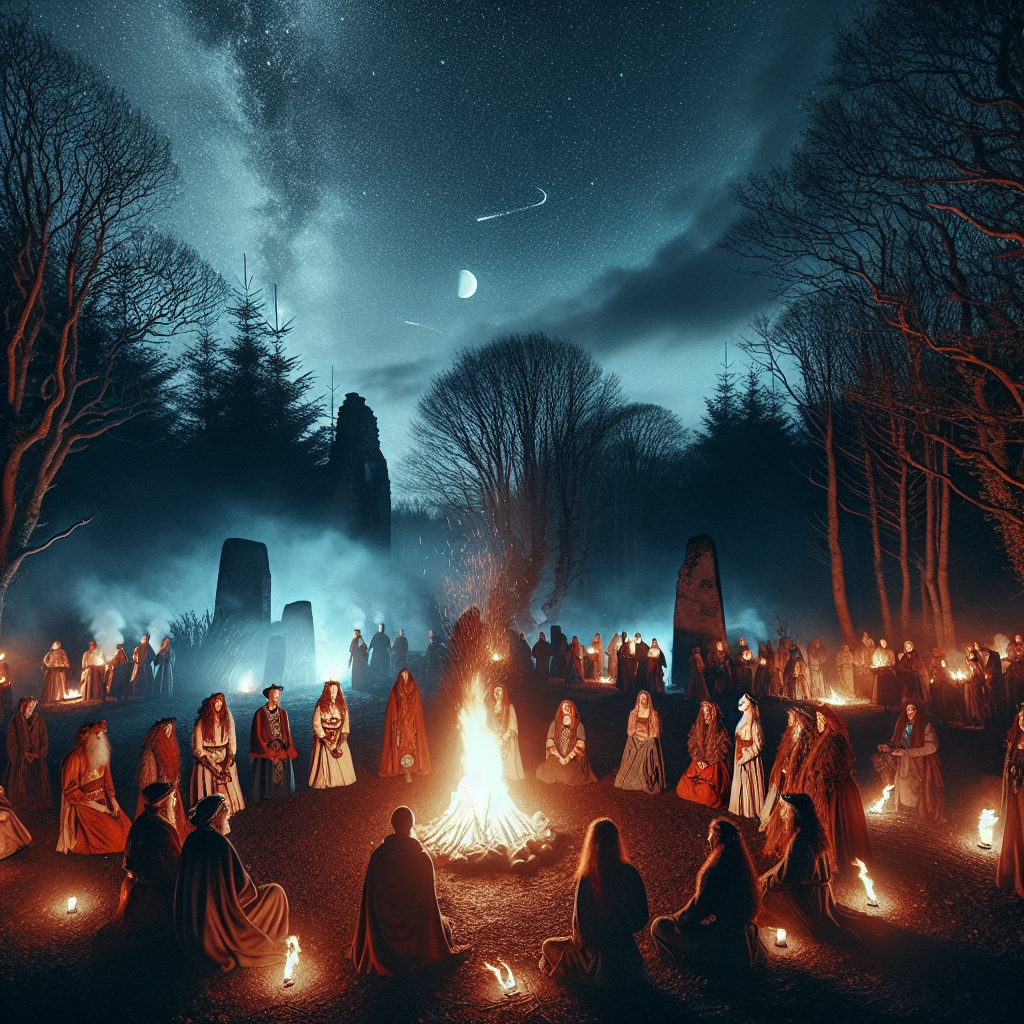Celebrating Samhain: The Ancient Festival of the Dead
Posted by Mystik Sisters™ on Oct 9th 2024

Samhain (pronounced ‘sow-in’) is one of the most intriguing yet often misunderstood ancient Celtic festivals. Celebrated from sunset on October 31st to sunset on November 1st, Samhain marks the end of the harvest season and the beginning of winter—a time when the veil between the living and the dead is believed to be thinnest. In this article, we will explore the origins, traditions, and modern-day practices associated with this fascinating festival.
Historical Roots of Samhain
Samhain has its roots in ancient Gaelic culture, especially among the Celts of Ireland, Scotland, and the Isle of Man. Historical records suggest that it was a time of communion with the dead, where families would set places at the dinner table for deceased relatives to honor their memory and invite their spirits to join in the festivities. This connection to the dead made Samhain a time of reflection, remembrance, and, often, foreboding.
The Transition from Harvest to Winter
Marking the beginning of winter and the end of the harvest, Samhain was a crucial time for communities that relied heavily on agriculture. It was a time for feasting on the last of the harvested crops, storing food for the winter, and preparing land for the next planting season. Rituals and offerings were common as farmers sought to ensure a bountiful harvest for the coming year. The practice of lighting bonfires during Samhain was also significant, symbolizing the warmth and light needed to ward off the impending winter’s chill.
Traditions and Customs
Many customs associated with Samhain still linger in contemporary society, albeit in altered forms. Trick-or-treating, for instance, has its origins in the practice of ‘guising’ where children would dress in costumes and go door-to-door for food and treats in exchange for songs or poems to honor the departed.
Some traditions included:
- Dressing up: Costumes were originally worn to disguise individuals from roaming spirits, preventing them from being recognized in the spirit realm.
- Bonfires: Lighting bonfires was believed to protect homes and livestock. Community fires served as a focal point for gatherings, fostering a sense of togetherness and community.
- Divination Practices: Samhain was considered an auspicious time for divination, with various traditions emerging, such as apple peeling, where the way an apple peel landed could predict one’s future.
Samhain in Modern Paganism
Samhain has been embraced by modern Pagans and Wiccans as a significant spiritual celebration. For these practitioners, October 31st is a sacred time for honoring ancestors, remembering loved ones who have passed, and celebrating the cycles of life and death. Rituals often include:
- Altars: Families may create altars adorned with photographs, mementos, and offerings to honor their ancestors.
- Ritual Gatherings: Community gatherings for rituals invoking protection and blessings are common. These rituals often include storytelling and sharing memories of those who have passed.
- Reflection and Introspection: Many practitioners use this time to reflect on their own lives, setting intentions for the coming year and embracing the changes that winter brings.
Conclusion
Samhain is more than just a celebration; it’s a rich tapestry of history, tradition, and reflection, deeply woven into the fabric of Celtic culture. Whether for those honoring ancient customs, connecting with the spiritual realm, or simply enjoying the festivities of Halloween, the essence of Samhain continues to resonate today. By understanding the roots and significance of this ancient festival, we can approach the season with respect and appreciation for both our ancestors and the cycles of nature.

